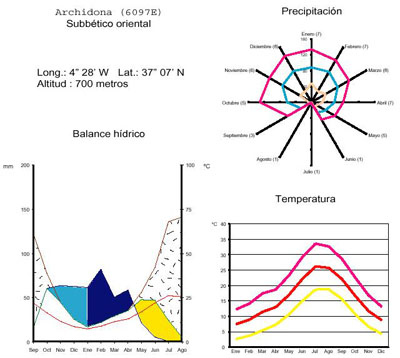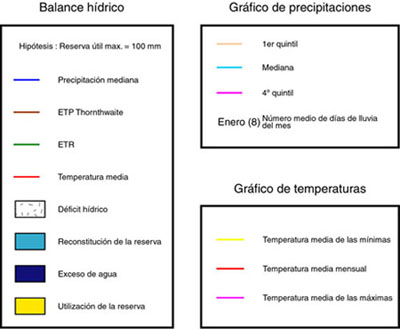Corresponde genéricamente al área del surco intrabético, donde la continentalidad, el aislamiento impuesto por los relieves circundantes y la altitud, determinan la aparición de un clima muy extremado, con veranos calurosos (en torno a 24°-25°) y, sobre todo, inviernos muy fríos, cuyas temperaturas medias suelen situarse por debajo de los 6°-7° y en los que las heladas son un acontecimiento frecuente. A ello hay que añadir unas precipitaciones exiguas, del orden de los 400 mms. o incluso inferiores, y con una distribución a lo largo del año más regular que la que caracteriza al resto de la región; aquí las precipitaciones primaverales ocupan un papel muy destacado y la sequía estival no es absoluta, registrándose algunas lluvias incluso en los meses de julio y agosto. Naturalmente, las precipitaciones en forma de nieve no son desconocidas durante el invierno.
Figura 1: Gráficos del observatorio de Archidona.


It generically corresponds to the intrabetic furrow, where the continetality, the isolation provided by the surrounding reliefs and the altitude, determines the appearing of a very extreme climate, with warm summers (around 24°-25°) and, over all, very cold winters, with average temperatures under 6°-7° and where frosts are a quite frequent phenomenon. Also, very scarce rainfalls, around 400mms or even lower, and with a more regular distribution along the year than in the rest of the climate types already explained, have to be added to the features of this climate type; here, Spring rainfalls have an important role and the summer drought isn't absolute, registering some rainfalls even in July and Agust. Naturally, snowfalls take place in winter.
Figure 1: Archidona's observatory graphics

